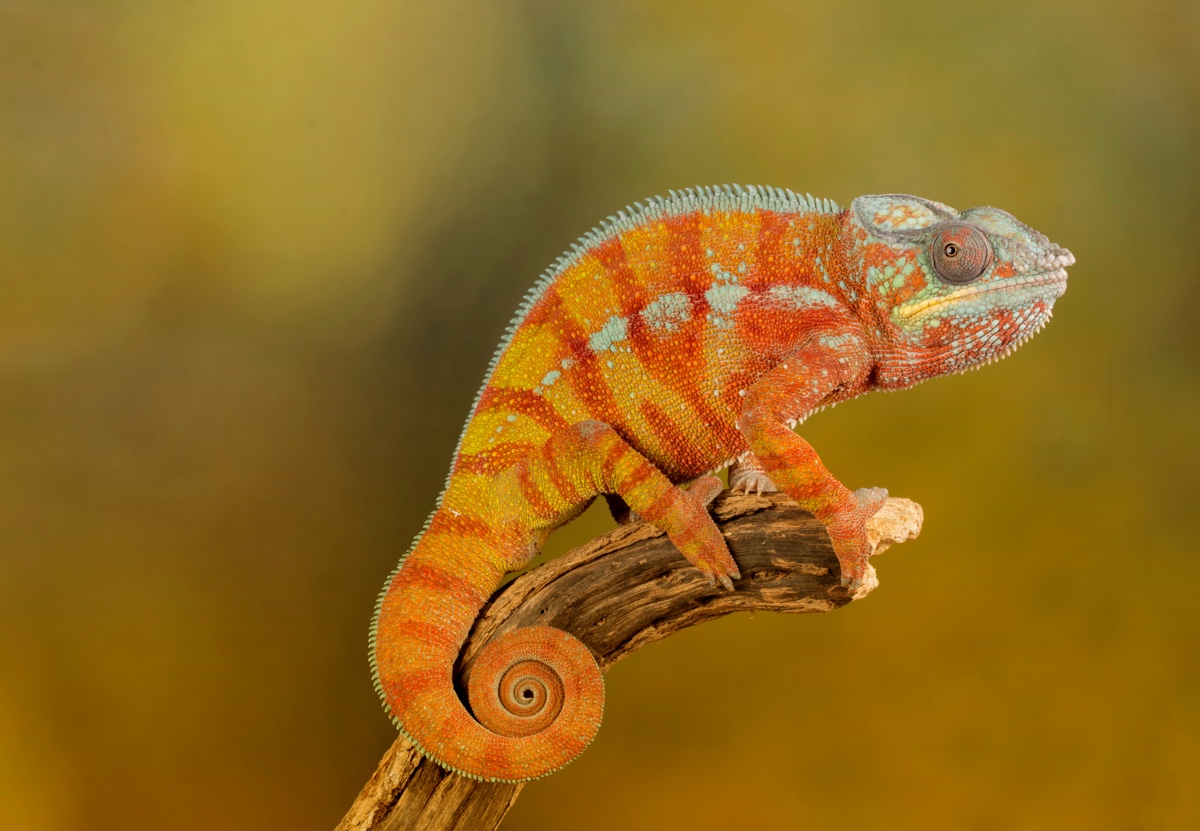
A former high-ranking Iranian military leader recently claimed that Israel used lizard spies that "attract atomic waves" in order to identify the location of Iranian uranium mines.
The remarks, by Hassan Firuzabadi, a military advisor to supreme leader Ayatollah Ali Khamenei, were made in response to the recent arrest of local environmentalists, The Times of Israel reported. Though he didn’t discuss the current case, he cited a past instance when suspicious individuals carrying reptiles such as chameleons were apprehended trying to enter the country.
"We found out that their skin attracts atomic waves and that they were nuclear spies who wanted to find out where inside the Islamic Republic of Iran we have uranium mines and where we are engaged in atomic activities," Firuzabadi told the Iranian Labour News Agency. [Mind-Controlled Cats? 6 Incredible Spy Technologies]
Though "atomic waves" are not a real thing, perhaps Firuzabadi was referring to gamma radiation — the waves with the smallest wavelengths in the electromagnetic spectrum — that would be emitted from radioactive isotopes during uranium mining.
Regardless, it turns out that the bizarre claim is ridiculous, two reptile experts told Live Science.
"This is pure and simple BUNK," Eric Pianka, a zoology professor at the University of Texas at Austin (who sometimes goes by the name The Lizard Man), wrote in an email to Live Science.
Far-out proposition
The idea that lizards could somehow attract "atomic" waves doesn’t make sense, because lizard skin is made of the exact same proteins as human skin: keratin, Pianka said. The scutes, or scales that cover lizards are made up of two types of keratin proteins: keratin A and B. Neither has any special ability to detect uranium or other radioactive materials.
Get the world’s most fascinating discoveries delivered straight to your inbox.
But what about other spying techniques? Perhaps the lizards somehow sense radioactivity found in uranium mines and are drawn to it?
Again, nope: The idea that lizards could be drawn to uranium mines flies in the face of all logical data, said Barry Sinervo, an evolutionary biologist at the University of Caifornia, Santa Cruz, who goes by the name of Dr. Lizardo.
For one, lizards, which are cold-blooded and seek warm spots to hang out, would have no incentive to venture deep into cold uranium mines, Sinervo told Live Science in an email. Sinervo's past research has shown that lizards learn the location of toasty spots and then seek them out — the opposite of uranium-mine seeking.
As for one of the specific types of lizards mentioned by Firuzabadi, chameleons (which are lizards in the family called Chamaeleonidae) live in trees and therefore have no incentive to leave their home base on twigs to go crawling around on rocks in a uranium mine, Sinervo said.
"So, the claim, based on what we know about lizard learning and motivation, is absurd," Sinervo said.
Originally published on Live Science.

Tia is the editor-in-chief (premium) and was formerly managing editor and senior writer for Live Science. Her work has appeared in Scientific American, Wired.com, Science News and other outlets. She holds a master's degree in bioengineering from the University of Washington, a graduate certificate in science writing from UC Santa Cruz and a bachelor's degree in mechanical engineering from the University of Texas at Austin. Tia was part of a team at the Milwaukee Journal Sentinel that published the Empty Cradles series on preterm births, which won multiple awards, including the 2012 Casey Medal for Meritorious Journalism.


